Freaknik And Rape Culture: Exploring The Legendary Event's Impact On Black Female Sexual Liberation During The '90s
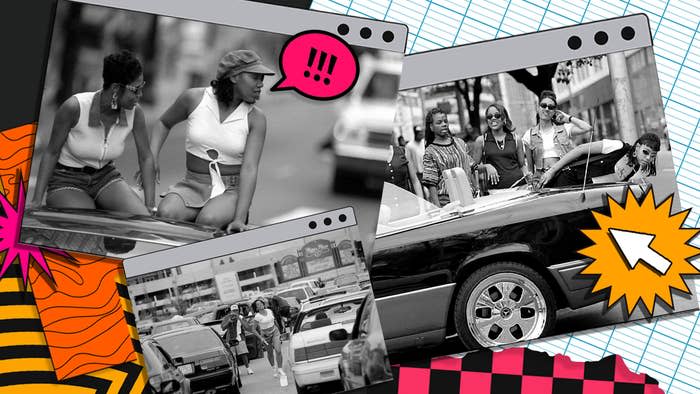
Warning: This post mentions rape and sexual assault.In 1998, the MTV reality series, “True Life,” aired an episode on Freaknik, the wildly popular Atlanta festival launched in the ’80s, where Black college students could have community with live entertainment that devolved into chaos and instances of sexual violence by the late ’90s. It follows several southern college students as they prepare for the annual event.
Some are fraternity brothers brushing off their step routines for a competition at Freaknik. Others are packing their winnebago for a fun road trip to the Black event of the year, including cameras and camcorders in case they spot an attractive woman on the street. A self-proclaimed “classy hoochie” is making a shopping run to find a few sexy clothes to bring.
The episode stands out as a confluence of activity, conversations and personalities that later gravitates to the topic of sexual politics at the event. This is the same era when Lil Kim proudly rapped about leaving cum stains; Zane’s erotic novel, “Addicted,” steamed up bestseller lists; and “The Player’s Club” brought moviegoers behind the doors of a striptease bar.
In addition, artists like rapper Foxy Brown and director Cheryl Dunye’s “The Watermelon Woman” similarly engaged with some of the most radical dialogues around Black sexuality — female agency and queer desire being among them — in new and exciting ways.
So, the segue in “True Life” was natural. By this point, Freaknik had become a space where public displays of Black sexuality and sexual freedom had also become mainstreamed and politicized. It was where the “playa hater,” the step king or queen, and the “classy hoochie” could chill, have fun and intellectualize. And it was the same place where attendees could be seen grinding on each other in the street, flashing their body parts and “doing all kinds of freaky stuff,” as a young man named Jemik puts it on “True Life.”
“This is heaven, son!” says his friend, Gator.
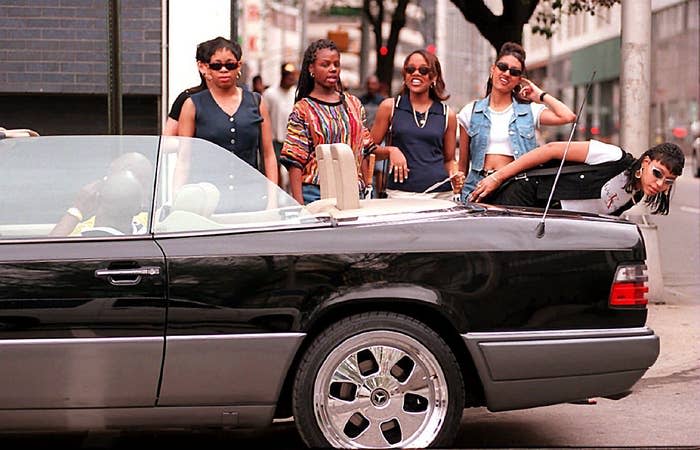
Mark Whitehead of Baltimore checks out the ladies as they check out his car. Left to right: Tracey Burnett, Victoria Milligan, Sonya Stanishewski, Linda Bagley, Kellie Mahone and Dana Jacobs in 1996.
It seemed that way. But as activated as many were around the idea of Black sexual expression amid a more eroticized pop culture, the end of that episode crystallizes how few were interested in engaging with its actual messages.
“Women down here dress like hoes with the short skirts and all that,” says one woman. “They don’t have any respect for themselves. They want that negative attention. I’m sorry — you’ve got a mind, you’ve got a brain, you’re intelligent. You don’t need to act and dress that way.”
Gwen, the “classy hoochie” seated nearby, is quick to defend herself: “I had on less clothes. But that didn’t mean I was less intelligent. That didn’t mean I was asking you to grab my ass.”
Then a man in an Iota Phi Theta sweatshirt brings this debate to a near end. “If you were dressed inappropriately, I don’t care how much intelligence you got,” he says. “I don’t see intelligence. I see your naked flesh. Now, I would not grab your body. But there are people that will. So, you should dress appropriately.”
A statement like that reflects rape culture and undercuts the very notion of freedom of sexual expression. As does this one from the same person: “If you walk around naked and you get grabbed, don’t come crying at the end and saying, ′Oh, I didn’t know I was going to get raped’ or ′I didn’t know I was going to get fondled.’”
This episode of “True Life,” now immortalized online, may garner additional audiences following Hulu’s new “Freaknik” documentary, which takes a lean — 82 minutes, to be exact — and largely celebratory approach to its story of the festival, even with the advantage of 20/20 hindsight. “Freaknik: The Wildest Party Never Told” streams Thursday on Hulu.
Interviews with scholars and artists like Jermaine Dupri, an executive producer of the film, and 2 Live Crew’s Uncle Luke help impress an image of Freaknik as a space for Black “liberation,” where folks could twerk in the southern heat to hits like Duice’s “Dazzey Duks.” An image that shouldn’t be sullied by the acts of sexual violence examined to a lesser degree in the film.
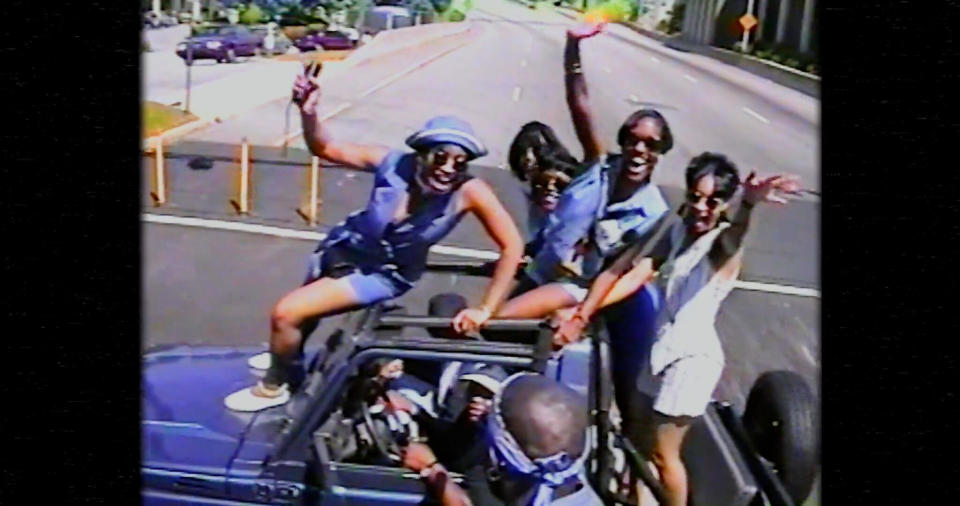
That seems a bit disingenuous with the reality captured on that “True Life” episode in mind, which aired the same year that four rapes and six sexual assaults were reported at Freaknik.
But “Freaknik” provokes an interesting question: Can we reflect on this pop culture era of Black sexual freedom, particularly for women, without also delving into its violent interruptions — including the rape culture lurking just beneath the surface of it?
“I think if you’re ignorant, you totally can because you wouldn’t know,” Adeerya Johnson, a self-proclaimed “Dirty South Feminist” and a Ph.D. candidate at the Institute for Gender, Race, Sexuality and Social Justice, told me.
“When I was young, I liked Lil Kim,” she continued. “I vibed with Foxy Brown. I danced to Uncle Luke and the 2 Live Crew. Any song that told me to shake my ass, I was down for it. When I was young and ignorant, I was down for it, ’cause I just thought it was fun.”
Johnson also thought about the TV shows and movies she watched throughout the ’90s where sex or sexual expression was part of the plot.
“I don’t think I internalized it as anything more than what I saw on TV,” she said. “But that’s me as a child. I think you can have conversations about what sex looks like for Black folks and what that rise meant in regards to liberation.”
That’s where the conversation often gets muddled or oversimplified, particularly through a nostalgic lens as in the case of “Freaknik.” Black female consumers were indeed vibing with the increasingly popular images of erotica and sexuality on the radio, the screen and at the bookstore in a way that the largely traditional South, in particular, hadn’t seen before.
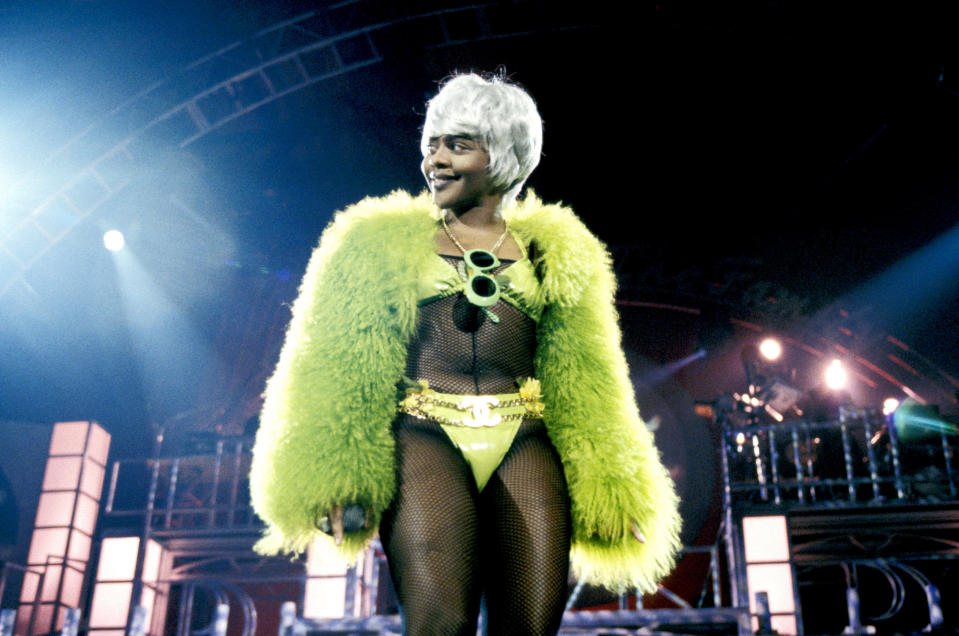
Lil' Kim, pictured here on the "No Way Out" tour, was among many Black female artists in the '90s that broke through the male-driven space for sexualized performance.
It was a sexual consciousness reminiscent of female artists from prior generations — including blues singers like Bessie Smith in the ’30s — that presented a “new awakened understanding of self,” as Johnson described it. But in the ’90s, it was happening in a wave.
R&B female artists like TLC, En Vogue and SWV also helped to push forward the conversation around Black female sexual agency, and what it means to be sexual and safe on the heels of the ’80s decade filled with misinformation about AIDS and STDs. And music videos from artists like Hoes With Attitudes catapulted a sexualized hip-hop into an entirely new direction.
While these artists might have made their own personal statements of sexual autonomy, it’s difficult to determine how consumers absorbed it. “I do wonder what are people perceiving and how are they taking that in if they’re not solely the creators of it,” Johnson added. It probably depends on who you ask.
This was when the South, Johnson explained, experienced a rise of Black sexual expression and hip-hop stars like Kilo Ali and 2 Live Crew with the popularization of video vixens and female strip clubs where Black women were also building their own sexual economies.
It presented a clash of motivation as women were excited to take up additional space in a more eroticized pop culture while some of their male counterparts hung on to old values of sexism that were evident in some of their lyrics.
“The type of music that is very explicitly telling you, I’m feening to, like, nut on you,” Johnson said. “I’m feeling to take this. A lot of these songs are so explicit of how you’re supposed to dance and how you’re supposed to perform.”
The messages can conflict with women’s enjoyment. “Men are deeply entrenched with misogynoir,” Johnson continued, “and so they feel that ownership of your body, even if you are dancing as a form of personal entertainment or personal satisfaction.”
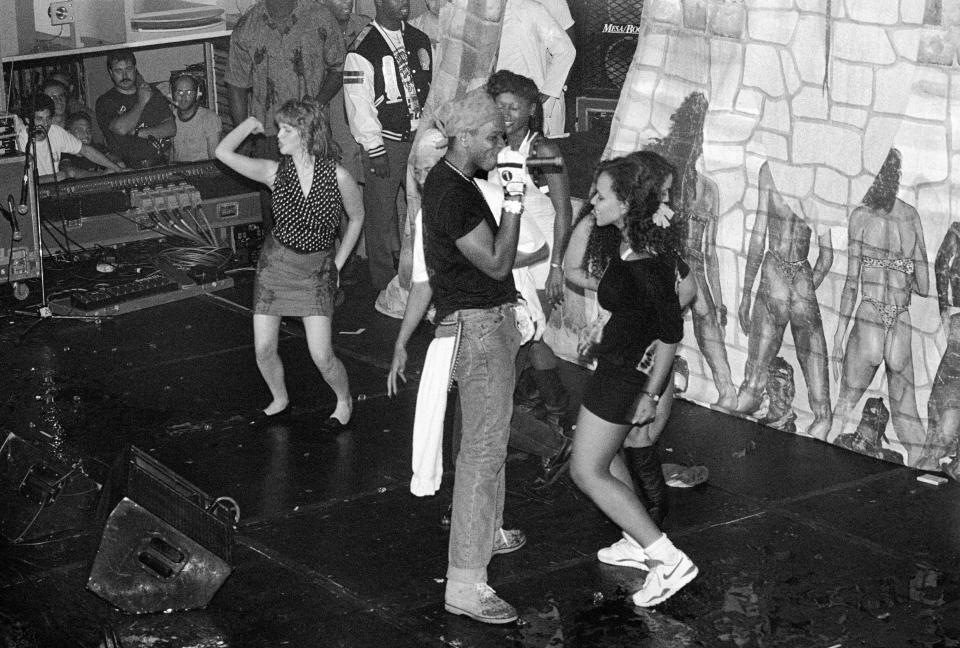
2 Live Crew, pictured here performing in New York City in 1990, were among many acts to use explicitly sexual lyrics with messages for women on how they should perform.
That’s what we saw at Freaknik and in that “True Life” episode. More young Black women were beginning to claim their sexual agency in a public space in ways that were fun. But they would too often flail inside a patriarchal system.
“Women know you have autonomy over your body,” Johnson said. “But also there is that confusion with misogyny that doesn’t allow Black women’s expression of sexuality to be a safe space in public. And that is where the challenge comes in.”
And that complicates the image of Black female sexual freedom that we did see from successful artists like Missy Elliott and Salt N’ Pepa in the ’90s. It wasn’t just a few Black women breaking through the deep-seated Black male-driven sexualized art space. There were many, and across all forms of entertainment and culture.
Zalika U. Ibaorimi, a former sex worker, and assistant professor of gender and women’s studies at the University of Illinois, Urbana-Champaign, runs off several examples of her own during my video call with her: Jessica Holter’s “The Punany Poets” on HBO. Director Sidra Smith’s queer short film, “A Luv Tale.” Singers Janet Jackson and Meshell Ndegeocello. Ursula’s (Samantha MacLachan) sexy serenade for Cleo (Queen Latifah) in “Set It Off.”
“So many Black women artists and Black queer artists have captured Black form in very erotic and beautiful ways,” Ibaorimi said. “And even sometimes, I will argue, in uncomfortable ways. I think that the erotic is also about confronting discomfort.”
That’s true. And few things were — and still are — more uncomfortable for many audiences, particularly those tethered to traditional and church values indicative to much of the Black experience, than a Black woman and/or queer artist with agency of any kind, much less sexual.
“There was always the ‘church hussy,’” Ibaorimi, whose father is also a pastor, said. “Somebody that was just doing a little too much. ‘Why is her skirt too little?’ or ‘Why is that dress so formally fitted? You’re being a distraction.’ And then of course, we would call that purity culture. It’s the issue of purity.”
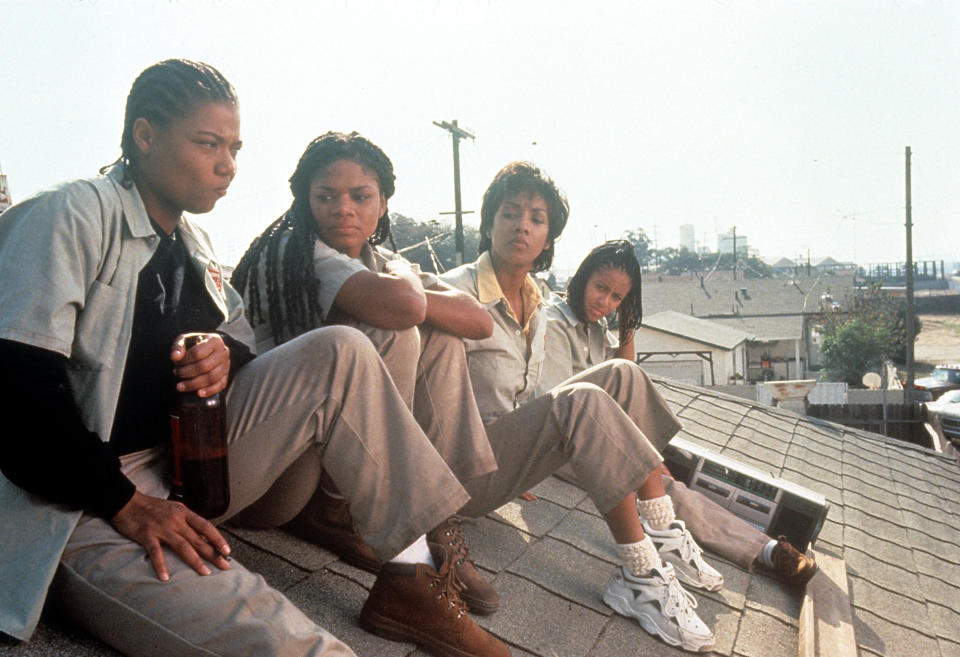
In the 1996 film, "Set It Off," Ursula (Samantha MacLachan) performs a sultry dance for girlfriend Cleo (Queen Latifah), which helped create space for eroticized Black queer artists throughout the decade.
It only meant that each female sexual provocateur that rebelled from that ideology helped shape how audiences understood and experienced Black female sexual agency. But many artists still had to contend with dialogues around their actualization of sexual autonomy in a society rife with violent repercussions and exploitation that benefits the straight male gaze.
Social critic bell hooks spent much of her 1997 Paste interview with Lil Kim questioning her about it. Kara Walker’s art was almost boycotted in part for its sexual imagery within the context of slavery. Even when artists claimed autonomy over their bodies or their right to express provocative ideas, concerns were raised — including by some feminists at the time.
“Everything comes back down to agency,” Ibaorimi said. “I think anytime Black women are demonstrating themselves in that way, there always has to be some sort of, ′Is this really what you wanna do? Is somebody telling you to do this?′ That dynamic.”
Because the potential of sexual agency was still such a radical notion. But that focus of the Black female body or sexuality as injurious could often take away from the notion of pleasure, which the conversation too often lacked throughout this era.
“Lil Kim and other rappers or artists — even Black femme pornographers or people who were laboring in those industries — were very aware that they were not gonna be everyone’s cup of tea,” Ibaorimi said. “But there was always a demand for someone who wanted to be titillated.”
She understands why the conversations have been so fraught, though, even in Black feminist spaces that are expected to be forward-thinking. But they are still rooted in realities from which we hadn’t, even by the ’90s, moved that far away.
“I don’t think that we can or should be able to divorce ourselves from many of these logics,” Ibaorimi said. “I think it’s too much a part of us. So, I think that satire and a roundabout way had to become a really big device for us so that we’d learn how to live with those things.”

Director Spike Lee's "Girl 6," was among a few film offerings that highlighted Black female sex workers that also bolstered negative expectations of Black women's sexuality.
Some of that came from really challenging the depictions of Black female sexuality popping up at the time, and in a way that doesn’t disappear images of the erotic but questions their messages. Because in the absence of being a part of scholarly discussion, pop culture became the default learning tool.
So, what does that mean for an example like “Girl 6,” director Spike Lee’s 1996 dramedy who, as its synopsis reads, “resorts” to working as a phone sex operator to make ends meet. The plot presents sex work as a desperate option — and not a viable job. On top of that, its protagonist’s (Theresa Randle) life only improves once she quits.
“Because, of course, why else would a Black woman want to be a sex operator?” Ibaorimi said. “It’s cute, and it’s fun to see somebody like Madonna or Naomi Campbell pop up, but when Madonna does it it’s cool and it’s sexy.”
Ibaorimi adds that Campbell’s role could have also been considered cool by “virtue of her model status” that audiences might be able to read into it. “But for everyone else,” she said, “it was kind of like there has to be some element of exploitation that would get you to this point.”
Writer-director Ice Cube’s “The Players Club” didn’t inspire much more progressive thought. As sexy as it is, and how nice it was to see Black erotic dancers depicted on screen in the ’90s, it also bolstered expectations of abuse and violence in sexual labor and expression.
At one point in the film, Diamond (LisaRaye McCoy), a stripper, is assaulted, and her cousin (Monica Calhoun) is later raped. It reinforces a social norm that violence and expectations of sex are natural byproducts of being sexual in public, even when it’s your job.
“It’s the idea [that] all these terrible things that are happening to them because [they] chose to be a dancer,” Johnson said. “So, bad things are going to happen to you until you quit. It’s like, ‘How does media follow along into those narratives of what being sexual means?’”
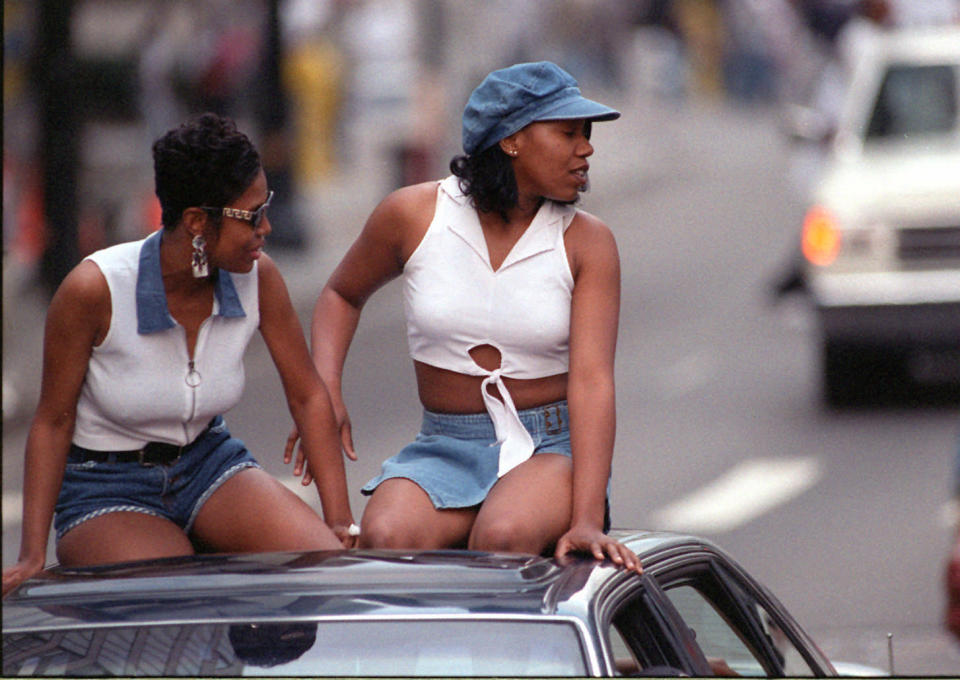
Freaknik attendees Michelle Marshall (right) and her friend enjoy a sunroof ride through downtown Atlanta in 1996.
Rather than confronting these ingrained ideologies upheld by the culture, including a male-dominated and misogynistic Hollywood and music industry, it reflected them.
While it’s not cinema’s or any art’s job to answer the question of how Black female sexual freedom can thrive in a misogynistic state, it’s hard not to wonder how and why certain storytellers refused to challenge problematic perspectives.
And what exactly were men taking away from this new influx of sexual imagery, particularly those rooted in a misogynistic mindset that was reflected in some of the scenes at Freaknik, where Black women’s sexual agency could sometimes be up for debate?
“That’s something that I would love to know from that generation,” Johnson said. “Because if we’re talking about actual documented incidents in regards to rape, sexual assault for specific events, how do we know what’s being translated as knowledge versus ignorance?”
And what would then become the path toward Black sexual freedom for women within this increasingly murky space? Johnson puts it on the individual.
“Liberating yourself sexually,” she said plainly. “There are Black women that love to fuck. You know what I’m saying? Like, they have the agency to say that loud and proud — and I am curious to see what that looks like.”
Need help? Visit RAINN’s National Sexual Assault Online Hotline or the National Sexual Violence Resource Center’s website.This post originally appeared on HuffPost.